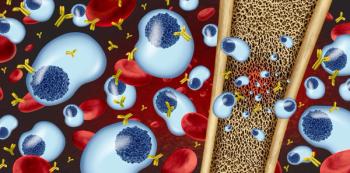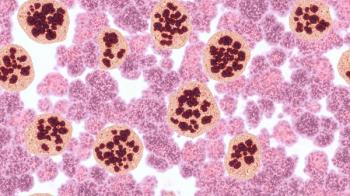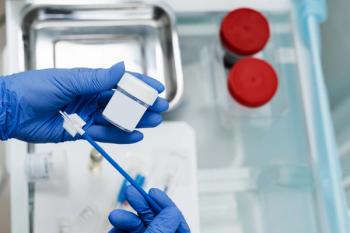
Study Suggests Transplant Recipients Are at Greater Risk of Developing RSV
Key Takeaways
- Immunocompromised individuals, especially lung and bone marrow transplant recipients, have a higher incidence of RSV compared with nonimmunocompromised patients.
- The study identified a significant prevalence of bacterial and fungal co-infections, such as Streptococcus pneumoniae and Aspergillus spp, in RSV-positive patients.
Immunocompromised patients, especially transplant recipients, face heightened RSV risks, leading to severe infections and complications.
Respiratory syncytial virus (RSV) poses a significant health threat for individuals who are immunocompromised, including those who are organ transplant recipients and oncologic patients. To assess the incidence of RSV infection in immunocompromised individuals, researchers conducted a retrospective analysis comparing these patients with nonimmunocompromised patients. The study authors, who published their findings in the Journal of Clinical Medicine, noted that RSV is significantly higher in individuals who are immunocompromised, specifically in those with lung and bone marrow transplants.1
RSV Severity in Transplant and Immunocompromised Patients
The CDC estimates that each year, approximately 60,000 to 160,000 older adults are hospitalized due to RSV, accounting for 6000 to 10,000 deaths, including those with weakened immune systems.2
Lung transplantation is the final treatment option for individuals with severe respiratory illnesses. A major challenge in managing these patients is airway infections, particularly those caused by RSV. Severe RSV infections can also lead to a decline in lung function and heighten the risk of chronic lung allograft dysfunction (CLAD), a primary factor that limits the survival of lung transplant recipients. However, data on RSV in individuals with solid organ transplants are limited.3
Design and Results From Retrospective Observational Study
The retrospective cohort study primarily aimed to determine the incidence of RSV in specific immunocompromised patient groups, including those who have received lung, other solid organ, and bone marrow transplants, as well as oncology patients, further categorized by solid organ and hematological neoplasia. Additionally, the study’s secondary objectives aimed to estimate the prevalence of bacterial, viral, and fungal coinfections with RSV and to compare mortality rates between RSV patients treated with ribavirin vs receiving only supportive therapy.1
A total of 1319 individuals who underwent bronchoscopy with bronchoalveolar lavage (BAL) for the detection of RSV were included in the study. Among the included patients, 466 were transplant recipients, of which 305 had a lung transplant, 80 underwent solid organ transplants other than lung, and 81 received hematopoietic stem cell transplants. Additionally, a total of 350 individuals were oncologic patients, with 80 having a solid organ cancer diagnosis and 270 being impacted by hematologic malignancies. The control population included 460 individuals.1
The results demonstrated that the incidence of RSV was significantly higher in immunocompromised patients compared with the control group (P=.01), particularly in symptomatic lung transplant recipients (P<.01) and bone marrow transplant patients (P<.01), a finding that was also confirmed in transplant recipients (P<.01).1
Further results found that for bacterial coinfections, a high prevalence of Streptococcus pneumoniae, Mycoplasma pneumoniae, and Nocardia spp. was noted in RSV-positive patients compared with RSV-negative patients. A high prevalence of Aspergillus spp. was also found in patients with RSV compared with those without RSV, which was also present in the transplant population.1
The findings suggest that individuals who are immunocompromised, including transplant recipients, face a higher risk of developing RSV compared with the general population. However, the study authors noted that further studies that include a larger patient group are needed to evaluate the connection between RSV and the development of CLAD.1
REFERENCES
1. Solidoro, P., Curtoni, A., Minuto, S., Shbaklo, N., De Rosa, F. G., Bondi, A., Sidoti, F., Patrucco, F., Zanotto, E., Corcione, S., Boffini, M., Marro, M., Costa, C., & Rinaldo, R. F. (2025). Impact of RSV Infection in Transplant and Immunocompromised Population: Incidence and Co-Infections: Retrospective Analysis of a Single Centre. Journal of Clinical Medicine, 14(13), 4803. doi.org/10.3390/jcm14134803
2. CDC. RSV in older adults. August 30, 2024. Accessed June 12, 2025. https://www.cdc.gov/rsv/older-adults/index.html#:~:text=RSV%20can%20be%20dangerous%20for,disease%20get%20an%20RSV%20vaccine.
3. Koval, C. E., & Gonzalez, B. E. (2024). RSV in transplant and immunocompromised patients. Cleveland Clinic Journal of Medicine, 91(9 suppl 1), S34–S41. doi.org/10.3949/ccjm.91.s1.06
Newsletter
Stay informed on drug updates, treatment guidelines, and pharmacy practice trends—subscribe to Pharmacy Times for weekly clinical insights.




















































































































































































































